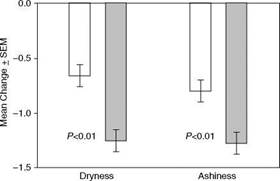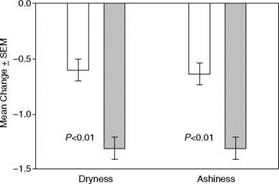The number of cleansing forms available for use on the body is more limited than for the face, but the range of surfactants used in these products is no less varied. Soap is a cleanser used since antiquity, and it remains a popular cleanser despite much negative press and the introduction of syndets. In fact, soap is an effective, economical, and acceptable cleansing alternative for many people. The large number of soap-based products sold by large-scale and specialty manufacturers attests to this, and results from studies like the one conduced by Barel et al. suggest its effects on healthy skin may be limited in normal use (103). But numerous controlled application studies demonstrate the potential for soap to negatively impact skin and for this reason prudence dictates choosing an alternative cleanser in certain situations. For example, while some studies suggest that soap is well-tolerated in and may actually benefit conditions such as atopic dermatitis (126,127), there are better options for cleansing diseased skin. For patients who prefer a bar form, syndet cleansing bars provide good cleansing and are usually well-tolerated. Those who prefer a liquid cleanser form can benefit from using one of the newer body wash technologies, such as a product that will deposit petrolatum on the skin during use (128). An added benefit to using a body wash product is that they are applied with a polyethylene mesh “cleansing puff.” This type of implement provides a mild exfoliation benefit (129) that can help remove the dry skin that accompanies many dermatoses.
There are situations were personal cleanser choice can be important, even for individuals with healthy skin. As mentioned above, the stratum corneum is thinnest on the genitalia (114), and the presence of a thin barrier in this intertriginous area seems a formula for personal cleanser issues. Cleanser irritation of the external genitalia is a greater issue for females than for males (130), and cleansing residue may also be a source of discomfort in females (131). In both sexes, cleansing with water only is advised, or if a cleanser must be used, a syndet-based product followed by thorough rinsing (130).
Aged skin also presents a cleansing challenge. The skin undergoes many changes with age, some of which can impact the response to personal cleansing products: the microvasculature that supplies the epidermis degrades and circulation decreases (132,133), the stratum corneum lipid content decreases (134), the stratum corneum turnover rate decreases (135), and the skin becomes drier and rougher (136). Resting TEWL values are lower in aged skin than in young skin, (134,137) which is usually associated with better barrier function. Aged skin does show a decreased response to irritants (133,137), but it also shows altered permeability to a variety of topically applied materials, suggesting that the decreased irritation reflects an attenuated inflammatory response rather than an improved barrier. Once perturbed, barrier recovery occurs more slowly in old than in young skin (134).
Cleanser choice can impact the elderly in a number of ways. The natural decrease in stratum corneum lipids and increased dryness can predispose aged skin to the drying effects of cleansers. Apart from its affect on skin appearance, increased dryness can worsen pruritus that commonly accompanies aging, which can lead to scratching, excoriation, and
infection (138). The loss of hydration and elasticity also makes the stratum corneum more susceptible to mechanical damage; a study conducted among residents of a long-term care facility showed an increased incidence of skin tears during periods when a non-emollient soap was used, compared to periods of emollient soap use (139). Regular skin cleansing remains important, but decreasing bathing or showering frequency and using a non-soap cleanser is recommended (140,141). Emollient cleansers can help, but their benefit must be balanced with the potential for slipping in the tub or shower (140). Since water temperature impacts skin-cleanser interactions (80,81), bathing in warm rather than hot water can help reduce drying and irritation. If a cleanser is used, thorough rinsing is important to assure that the cleanser residue is removed from the furrowed skin surface (142).
Race can also be a consideration when recommending or choosing a personal cleansing product. There are numerous published works describing physiological differences between different racial groups and controlled exposure studies that examine differences in irritant susceptibility (143-149), but the practical implications of the reported results in terms of susceptibility to in-use irritation remain unclear. Regardless of whether there are differences in the magnitude of the physiological response to personal cleansing products, the potential to induce some level of dryness or irritation undoubtedly exists for all skin types and this could have different implications for different groups. For
|
|
|
|
|
|
|
|
example, dry skin flakes are more visible when viewed against a dark background and light scattered by dry skin gives dark skin a dull, gray, “ashy” appearance, a condition that is considered undesirable or even disturbing to individuals with skin of color. Moisturizers are often used to mitigate skin dryness and the ashy appearance, but proper cleanser selection is also important to help minimize dry skin production.
 |
|||
To demonstrate the potential impact of personal cleanser choice on dryness and ashiness, we conducted a blinded, parallel group study among African American women with self-perceived dry/ashy skin, especially on their legs (150). Approximately half of the 83 women enrolled were randomly assigned to use a petrolatum-depositing body wash for daily showering for four weeks, and the remainder of the subjects were assigned to use a syndet bar. Moisturizer use was prohibited to eliminate this variable as a potential confounding effect and tub bathing was restricted. The dermatologist investigator scored dryness and ashiness on the lateral surface
end. Subjects also completed a brief psychosocial questionnaire at these times to assess the impact of their dry/ashy leg skin on self-image. The dermatologist’s evaluations showed that both personal cleansing products reduced dryness and ashiness over the course of treatment; a significantly greater reduction was observed for those subjects using the petrolatum-depositing body wash (Fig. 7). Weather conditions were reasonably consistent during the study, but a baseline habits and practices questionnaire showed that a high percentage of the enrolled subjects used a soap or combo bar (soap + syndet) as their usual cleanser. Since the study did not include a pretreatment period, some improvement in dryness and ashiness was expected as a result of switching to a less drying (i. e., non-soap) cleanser. While the test cleansers had a positive impact on these clinical parameters, an even more striking effect was shown on subjects’ self-image (Fig. 8). Mean responses to these questions were relatively poor at baseline. Responses for subjects using the syndet bar exhibited a shift toward neutrality over the course of the study. However, responses for subjects who used the petrolatum-depositing body wash exhibited a strong positive shift, demonstrating that modern personal cleansing products can have a much broader impact than simply providing a means to remove soil from the skin.


